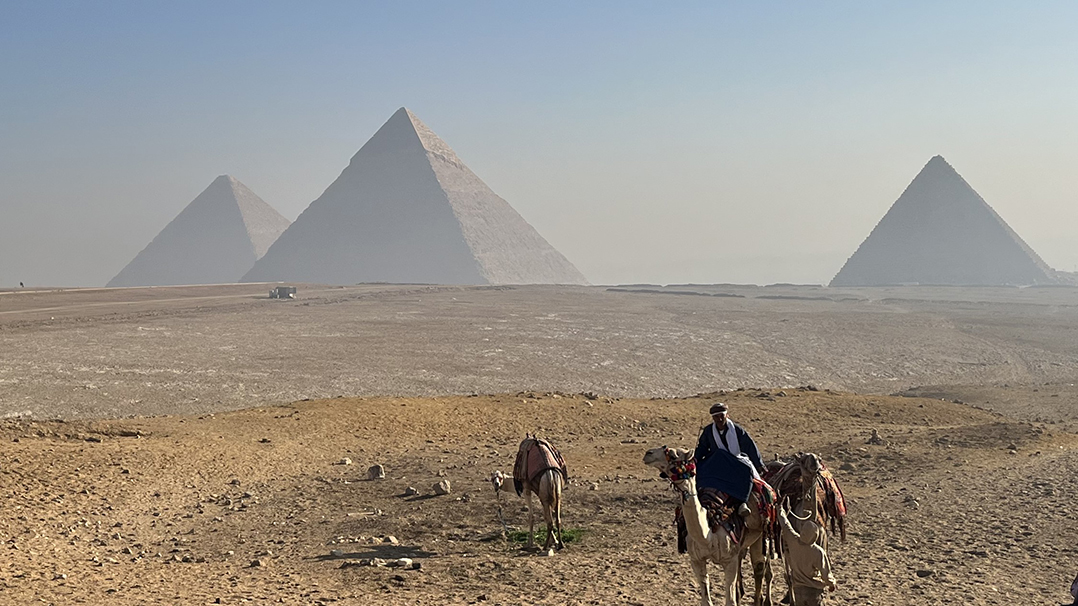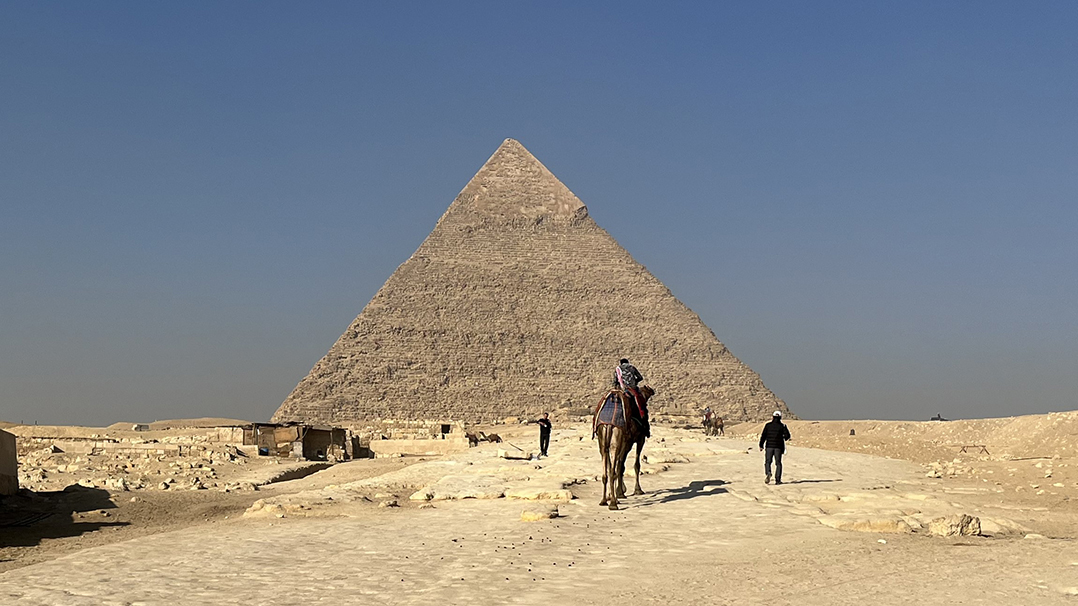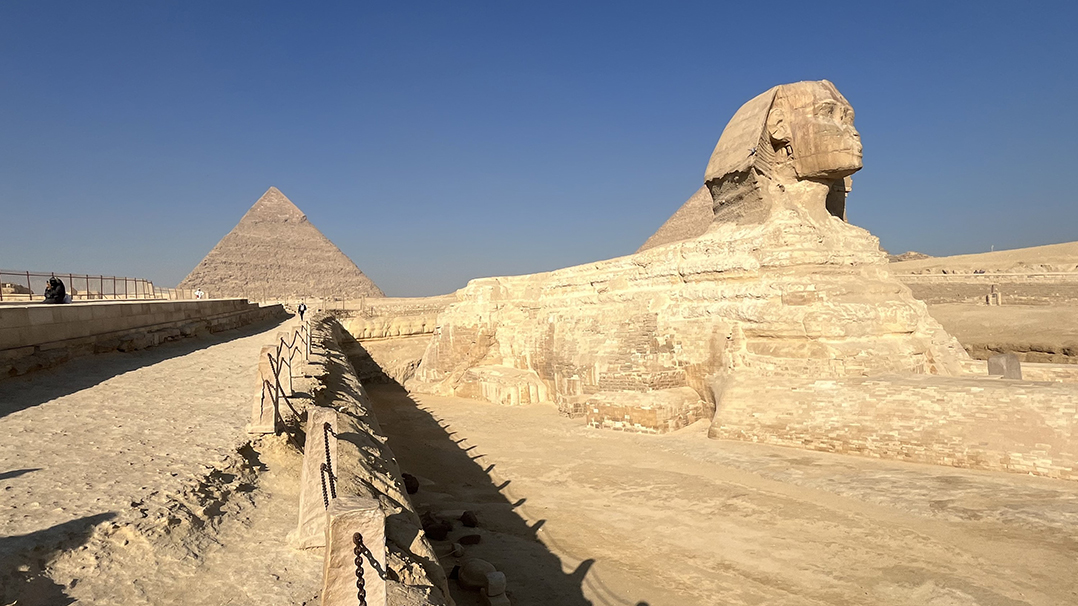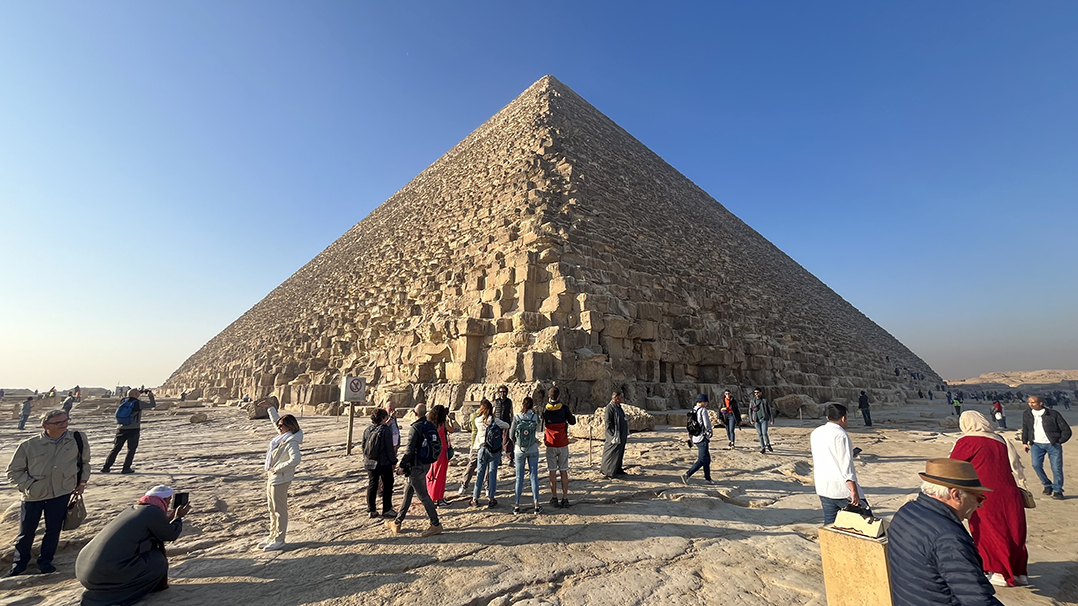In our continuing visit to Egypt, we stop by the famous pyramids on the Giza Plateau above Cairo.
The Giza pyramids were built as tombs for three consecutive pharaohs — Khufu, Khafre and Menkaure — who ruled Egypt between 2589 B.C. and 2504 B.C. Scholars believe paid workers, including farmers during annual Nile River flooding, built the pyramids. Khufu’s pyramid, the earliest and largest, is often called the Great Pyramid, the only surviving “wonder” of the ancient world. It was originally 481 feet tall, making it the tallest thing made by man for almost 4,000 years. The Great Pyramid, built between about 2589 B.C. to 2566 B.C., was constructed from 2.3 million stone blocks, weighing an average of 2 1/2 tons each. If those blocks were laid end to end, they would extend more than 2,000 miles. At 92 million cubic feet, Khufu’s pyramid is still the most massive structure ever built. Its alignment varies from true north by less than 3.4-arc minutes, less than 1 part in 1,000. Its base, the size of 10 football fields, is a perfect square to within 4.6 inches, again less than 1 part per 1,000. All of this was accomplished when the Egyptians had not yet invented the wheel and had only stone and copper tools.
Khafre’s pyramid is smaller than that of his father but appears larger because of its higher elevation. Its apex still contains the polished white limestone that once covered all the Giza pyramids. The Great Sphinx, about a mile east of Khafre’s pyramid, lies in the quarry from which workers mined limestone for that pyramid. Scholars believe its damaged face is that of Khafre. The pyramid of Menkaure is by far the smallest of the Giza pyramids, rising only to about 215 feet, less than half the height of Khufu’s Great Pyramid.








